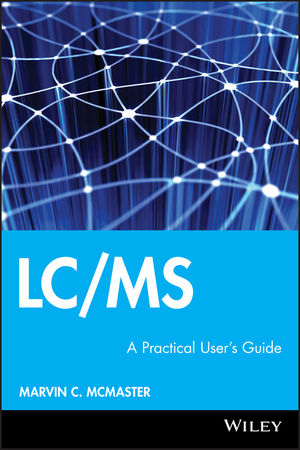LC/MS: A Practical User's GuideISBN: 978-0-471-65531-2
Hardcover
184 pages
August 2005
 This is a Print-on-Demand title. It will be printed specifically to fill your order. Please allow an additional 10-15 days delivery time. The book is not returnable.
|
||||||
A practical guide to using and maintaining an LC/MS system
The combination of liquid chromatography (LC) and mass spectrometry (MS) has become the laboratory tool of choice for a broad range of industries that require the separation, analysis, and purification of mixtures of organic compounds.
LC/MS: A Practical User's Guide provides LC/MS users with an easy-to-use, hands-on reference that focuses on the practical applications of LC/MS and introduces the equipment and techniques needed to use LC/MS successfully. Following a thorough explanation of the basic components and operation of the LC/MS system, the author presents empirical methods for optimizing the techniques, maintaining the instrumentation, and choosing the appropriate MS or LC/MS analyzer for any given problem.
LC/MS covers everything users need to know about:
The combination of liquid chromatography (LC) and mass spectrometry (MS) has become the laboratory tool of choice for a broad range of industries that require the separation, analysis, and purification of mixtures of organic compounds.
LC/MS: A Practical User's Guide provides LC/MS users with an easy-to-use, hands-on reference that focuses on the practical applications of LC/MS and introduces the equipment and techniques needed to use LC/MS successfully. Following a thorough explanation of the basic components and operation of the LC/MS system, the author presents empirical methods for optimizing the techniques, maintaining the instrumentation, and choosing the appropriate MS or LC/MS analyzer for any given problem.
LC/MS covers everything users need to know about:
- The latest equipment, including quadrupole, time-of-flight, and ion trap analyzers
- Cutting-edge processes, such as preparing HPLC mobile phases and samples; handling and maintaining a wide variety of silica, zirconium, and polymeric separation columns; interpreting and quantifying mass spectral data; and using MS interfaces
- Current and future applications in the pharmaceutical and agrochemical industries, biotechnology, clinical research, environmental studies, and forensics



